Queensland Labor Premier Anna Bligh, in a letter published in the Courier Mail on 8 August, claimed concern at the decline in South East Queensland's koala population. However, it was her Government which only recently legislated, against community and local council objections, to fast-track the destruction of much of the remaining koala habitats in South East Queensland to make way for residential development.
Queensland Government to blame for the koala's demise
Wildlife Preservation Society Queensland, Bayside Branch media release
The Queensland Government's growth strategy and past poor planning are the causes of the demise of the state's wildlife emblem, the koala, in South East Queensland, say conservationists.
"One of the biggest reasons why the SEQ koala is heading towards extinction is because of the State Government's pursuit of growth at any cost," said Simon Baltais, spokesperson for Wildlife Preservation Society of Queensland Bayside Branch. "As Deputy Premier and Minister for the Department of Infrastructure and Planning, Paul Lucas should be held responsible for this deplorable situation."
"Hundreds of hectares of koala habitat will be destroyed and hundreds of koalas will be killed because of the Minister's push to open more land for residential development," said Mr Baltais.
In a recent joint statement from the Premier and Deputy Premier Lucas on the issue of providing more land for urban development it was stated, "The development industry has been calling on us to make more land in the Urban Footprint available sooner - here it is." (see attached media statement at end)
Yet the Government's own research has shown urbanisation is driving the koala to extinction (see attached background paper). The SEQ koala had gone from Common to Vulnerable in 2004 and now the Koala Coast koala population is considered Endangered. Just recently the Environmental Protection Agency and Moreton Bay Regional Council showed the urban koala population in that area had declined 46 per cent over the past six years. The situation is similar on the Gold Coast, where the State Government has condemned hundreds of koalas to death because they have allowed massive development in Coomera koala habitat.
"The loss of koala habitat was recognized as the biggest killer of koalas." said Mr. Baltais. "As a member of the Koala Taskforce recently setup to advise the State Government on the matter of how to save the koala I will state what scientists have been saying since 1995, protect koala habitat in both the rural and urban environment."
"The key reason why the koala is heading towards extinction is because the State Government is ignoring the scientists and because ministers like Mr Lucas have encouraged an unsustainable pattern of development in SEQ."
Simon Baltais
WPSQ - Bayside Branch
Mb: 0447 539 968
Sunday, August 10, 2008
The 1995 Planning Guidelines for the Conservation of Koalas in the Koala Coast (SPP 1/95) stated, urban residential, industrial and commercial estates and major Community developments were considered to be generally incompatible with the maintenance of koala habitat values.
However, the State Government allowed urban development to occur in koala habitat.
The 1997 Planning Guidelines for the Conservation of Koalas in the Koala Coast (SPP 1/97) stated that urban residential, industrial and commercial estates and major community developments were considered to be generally incompatible with the maintenance of koala habitat values.
However, the State Government allowed urban development to occur in koala habitat.
In March 2004 the koala was re-listed from a common species to 'vulnerable to extinction' in the South East Queensland Bioregion, under the Nature Conservation Act 1992 (NCA).
However, the State Government allowed urban development to occur in koala habitat.
In 2005 the SEQ Regional Plan stated that koala populations are declining or becoming locally extinct in many areas, primarily due to habitat loss. The SEQ Regional Plan Regulatory provisions stated that subdivision of land in the Regional Landscape Area could not be subdivided below 100 ha.
However, the State Government allowed urban, commercial development, rural industries and quarries to occur in koala habitat and allowed subdivision of koala habitat in the Regional Landscape Area. The lots were smaller than 100ha.
In 2006 the Nature Conservation (Koala) Conservation Plan 2006 and Management Program 2006-2016 stated that koalas are suffering from the impacts of urban development and habitat clearing. The greatest threats to their survival are the destruction and fragmentation of their habitat, car strikes, dog attacks and disease.
However, the State Government allowed urban expansion and development to occur in koala habitat.
In 2006 Nature Conservation (Koala) Conservation Plan 2006 stated:
koala habitat means-
(a) a woodland where koalas currently live; or
(b) a partially or completely cleared area that is used by koalas to cross from (1) one woodland where koalas currently live to another woodland where koalas currently live; or
(c) a woodland where koalas do not currently live, if the
woodland-
(i) primarily consists of koala habitat trees; and
(ii) is reasonably suitable to sustain koalas
However, the State Government allowed urban expansion and development to occur in koala habitat.
In 2007 the Report on Koala Coast Koala Surveys 2005-2006 (EPA) stated,
Studies have suggested that conservation programs for wild populations need to be designed to conserve habitat capable of supporting approximately 5000 - 7000 animals in order to ensure long term persistence (Begon et al. 1996; Smith 1996; Reed 2003). To conserve this number of koalas in the Koala Coast, the area of RL/RP would need to be increased by between 12% (24 550 ha) and 57% (34 440 ha) based on habitat composition in 1997. Improving the landscape composition through bush rehabilitation to fully vegetate the RL/RP would not provide sufficient habitat by itself to maintain a viable koala population of 5000 - 7000 animals. Consequently, functional habitat must also be conserved on the Urban Footprint to secure sufficient resources
However, the State Government allowed urban expansion and development to occur in koala habitat.
In 2008 the survey by consultants GHD for the Environmental Protection Agency and Moreton Bay Regional Council showed the urban koala population in that area had declined 46 per cent over the past six years. The loss of koala habitat was recognized as the biggest killer of koalas.
Perhaps repetition repetition repetition will finally see the State Government take strong positive action and stop the loss of koala habitat?
Unfortunately, the State Government has already suggested major koala habitat south of Boundary Road, Thornlands (Woodlands Drive) be opened to greenfield development and has forced the community to go to court to stop quarries destroying koala habitat in Mt Cotton. The State Government appears to have written off hundreds of hectares of koala habitat and koalas in the Coomera area.
Is the State Government perhaps just a bunch of slow learners? Do they listen too much to developers and not the scientists and community?
Help the State Government understand the need to protect koala habitat, if
they are genuine about saving the koala, by sending them an email and
reminding them. Email:premier[AT]ministerial qld gov au and
deputypremier [AT] ministerial. qld. gov. au
Joint Statement:
Premier The Honourable Anna Bligh
Deputy Premier and Minister for Infrastructure and Planning The Honourable Paul Lucas
Wednesday, June 04, 2008
Premier Anna Bligh today announced the State Government would fast-track planning for development of 17 greenfield sites in South-East Queensland, as part of its plan to tackle housing affordability.
Ms Bligh said while the Government was limited in its ability to influence
housing prices, she was determined to do everything possible to tackle the
issue of affordability.
"I want the Australian dream to be alive and well here in Queensland, particularly for young people wanting to own their first home.
"Yesterday we announced significant changes to stamp duty to make buying a home in Queensland cheaper and today, we are tackling the issue of land supply.
"Last year as Treasurer and Infrastructure Minister I commissioned a review of the Greenfield areas within the Urban Footprint that could be market-ready sooner.
"I want to see land being turned into new homes for Queenslanders as quickly
as humanly possible and this investigation looked at 42 greenfield areas -
containing more than 40,000ha of undeveloped land.
As a result - the Government will remove any regulatory hurdles slowing the development process on 12 sites:
- Maroochydore, Meridian Plains, on the Sunshine Coast;
- Market Drive and North Lakes in Moreton Bay;
- Upper Kedron and Rochedale in Brisbane;
- Coomera and Helensvale on the Gold Coast;
- Springfield and Redbank Plains in Ipswich; and
- Kinross Road and South-East Thornlands in Redlands
"This will make it possible for the industry to begin the development process of these sites by Christmas.
"In addition, there are five sites where we believe integrated communities of 15,000 people or more can be delivered and we will work with councils to prepare land developer-ready within 12 months:
- Palm View and Caloundra South on the Sunshine Coast;
- Flagstone in Logan;
- Oxley Wedge in Brisbane;
- Ripley Valley in Ipswich
"That's a total of 17 new Greenfield sites that will be developer-ready by this time next year.
"This is about cutting red tape and bottlenecks that are delaying the development process.
"These bottlenecks are occurring at all levels of government - including within State Government agencies - and its not good enough.
"An implementation team will be established with the Department of Infrastructure and Planning charged with the task of cutting through and removing these hurdles.
"The development industry has been calling on us to make more land in the Urban Footprint available sooner - here it is," she said.
Deputy Premier and Minister for Infrastructure and Planning Paul Lucas said
the fast tracking of Greenfield sites will be guided by an Action Plan
released today.
"Housing affordability is a challenge that demands action not just at all levels of Government but also from the development industry," said Mr Lucas.
"The industry wants more land released and the Bligh Government has responded with a plan that will provide additional housing choice for the public and contain costs by increasing competition between developers.
"But governments can't do it all alone and we can only bring these sites forward if the necessary infrastructure is in place.
"Yesterday we announced the $107 billion South East Queensland Infrastructure Plan and Program, which demonstrates our commitment to building for Queensland's future.
"Now we need to work with the industry to deliver these sites ahead of time.
"They will also need to demonstrate how they plan to deliver the transport options, road upgrades, water and energy needs for these areas.
"These sites must all be developed as well-planned and integrated communities and the State Government will need to ensure growth is spread across the regions.
"Although the review shows plenty of greenfield land available for housing it must be emphasised the South East Queensland Regional Plan aims to cater for 45 percent of the expected population growth through infill and redevelopment."
"This review is another one of the State Government's strategies to address
housing affordability in addition to setting up the Urban Land Development
Authority and implementing reforms to the state's planning and development
systems."
Visit www.dip.qld.gov.au for more information.
Media: 3224 4500 (Premier's office) or 3227 8425 (Deputy Premier's office)
Wednesday, 4 June 2008
I assure readers who share my concern about the continued decline in southeast Queensland's koala population that I appreciate the need for a multi-pronged strategy.
The specific areas I have requested the taskforce to consider are further protection of koala habitat, changes to road speeds, signage and koala crossings, koala-friendly fencing in habitat areas, restricting or controlling dogs and banning clearing of habitat trees.
Pets are an important part of our lives, so proposals for controls or restrictions will arouse the most discussion.
However, this is a discsussion we need to have as part of a total response.
Anna Bligh
Premier of Queensland
What you can do: Email Premier Anna Bligh (premier [AT] ministerial qld gov au) and Deputy Premier Paul Lucas (deputypremier [AT] ministerial. qld. gov. au) to demand that they act now to end Queensland's economic dependency upon population growth. This dependency, if not broken, will make the extinction of the koala and other native species, such as the lungfish, inevitable.
See also: Locals join koala 'crisis' taskforce in the Bayside Bulletin of 7 Aug 08 including readers' comments.


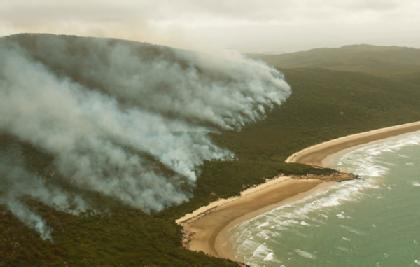
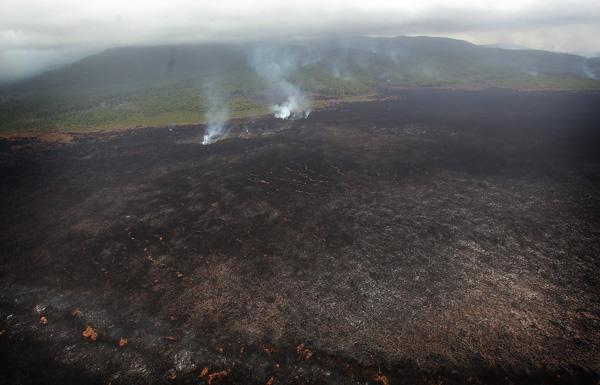
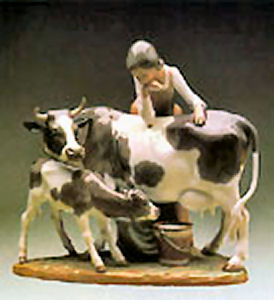
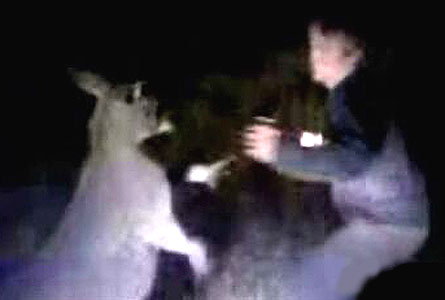 That two socially immature males would cruelly bash and kick unconscious a kangaroo whilst capturing the sickening spectacle on video in an apparent attempt to impress their social peers should hardly come as a surprise in a country which, unlike South Africa which nurtures and celebrates its herds of wildebeests, stigmatises the magnificent kangaroo as a pest like a blowfly.
That two socially immature males would cruelly bash and kick unconscious a kangaroo whilst capturing the sickening spectacle on video in an apparent attempt to impress their social peers should hardly come as a surprise in a country which, unlike South Africa which nurtures and celebrates its herds of wildebeests, stigmatises the magnificent kangaroo as a pest like a blowfly.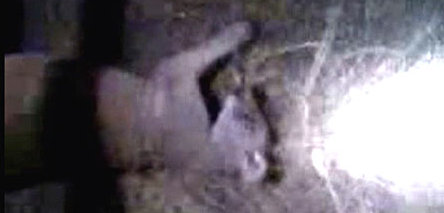 In Victoria, the DSE regularly give permits for killings when landowners are inconvenienced. Is it not surprising that there are low-lives that think that killings for entertainment are "fair go".
In Victoria, the DSE regularly give permits for killings when landowners are inconvenienced. Is it not surprising that there are low-lives that think that killings for entertainment are "fair go".
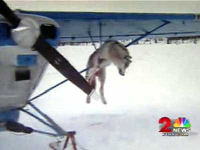
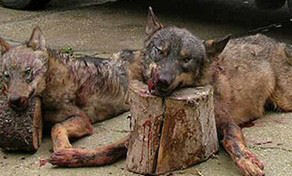
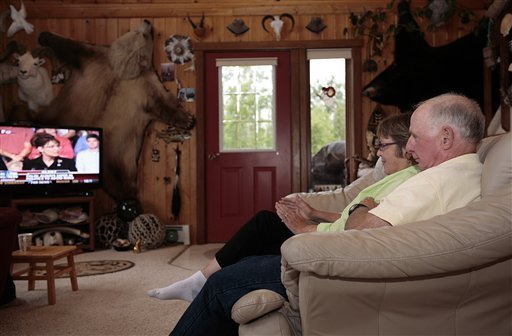

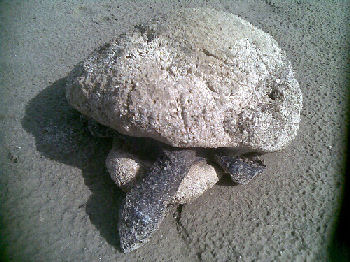
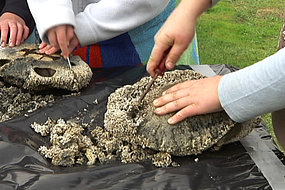 Volunteers cleaning victims of worm and market-logic
Volunteers cleaning victims of worm and market-logic
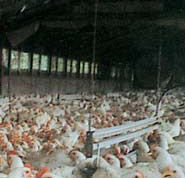
Recent comments